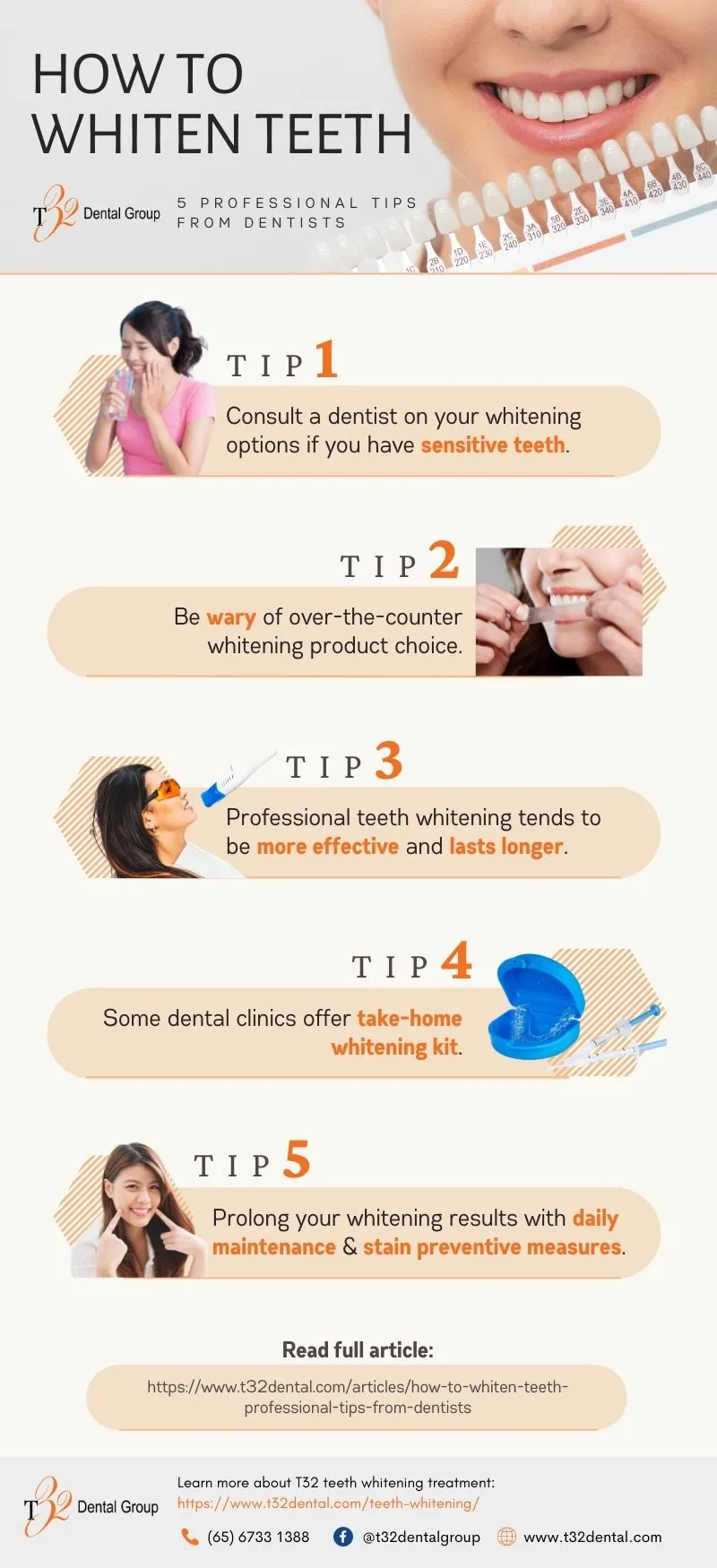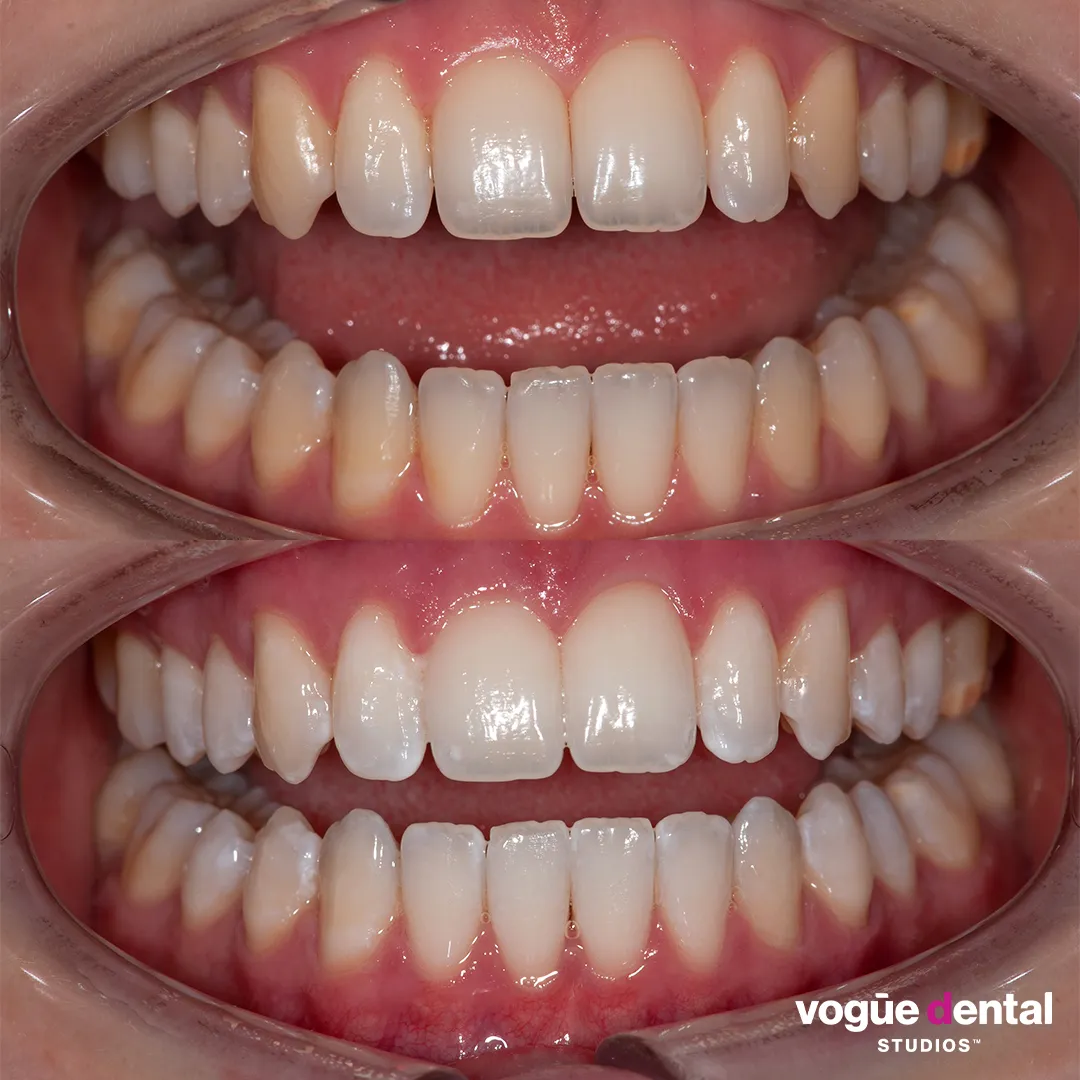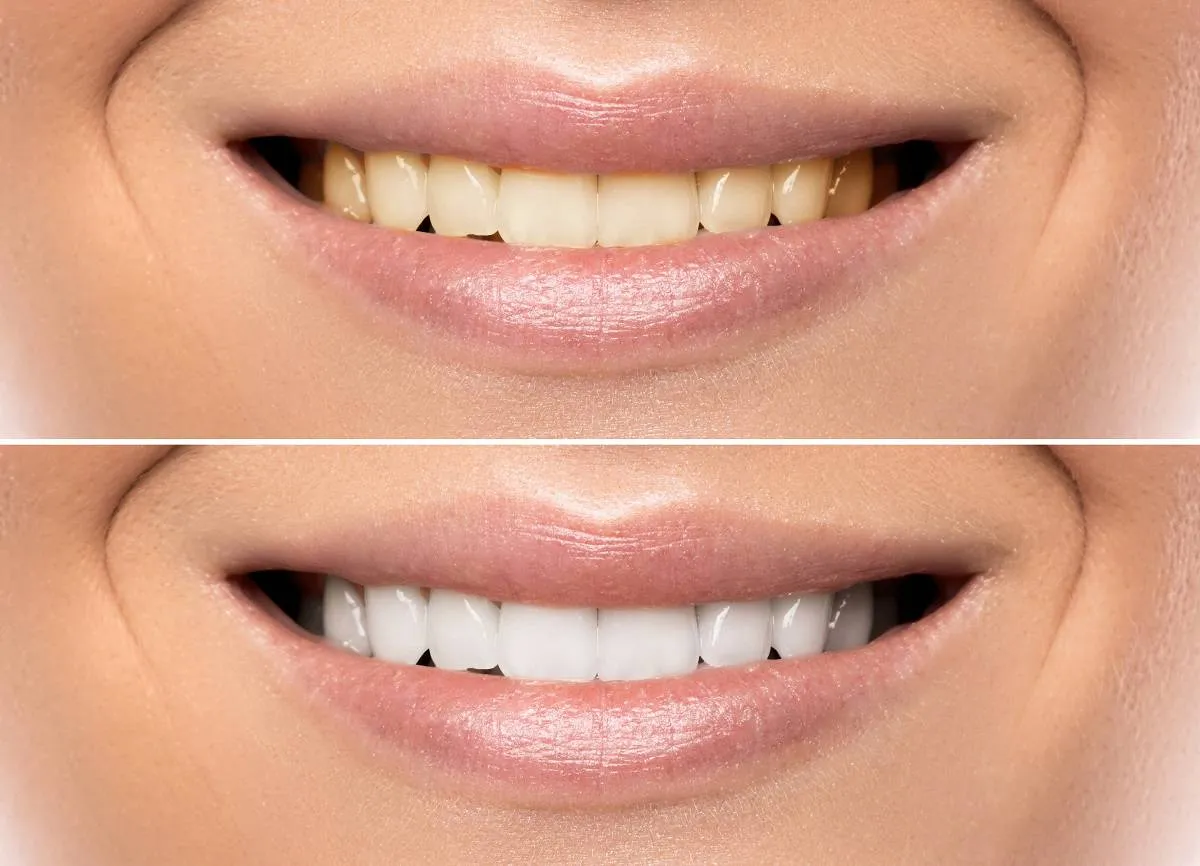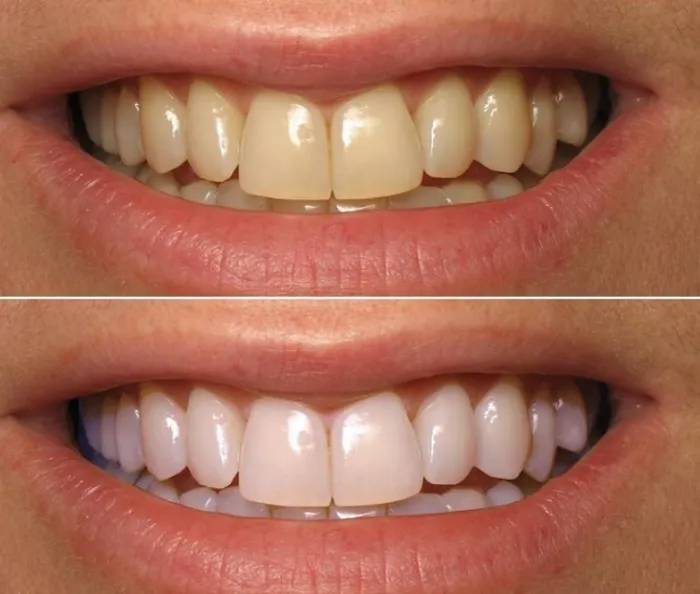Why Teeth Whitening Didn’t Work?
Teeth whitening is a popular cosmetic procedure, and it often delivers the desired results, a brighter, more confident smile. However, it’s not always a guaranteed success. Many factors can contribute to why teeth whitening might not work as expected, leaving you feeling disappointed. Several variables influence the effectiveness of the treatment, including the type of stains present, the method of whitening used, and even your lifestyle choices. Understanding these common causes is the first step in addressing the problem and finding a solution. From the strength of the bleaching agents to your daily habits, various elements can influence the final outcome. In this article, we’ll explore the top five reasons why teeth whitening might not work and provide insights into how you can achieve the smile you desire.
Insufficient Bleaching Strength
One of the primary reasons teeth whitening might fail is the lack of sufficient bleaching strength. Over-the-counter products often contain lower concentrations of hydrogen peroxide or carbamide peroxide, the active ingredients responsible for whitening. These lower concentrations may not be potent enough to penetrate deep stains or address more severe discoloration. Professional treatments, on the other hand, use much higher concentrations, often yielding significantly better results. The strength needed depends on the type and severity of the stains on your teeth. Surface stains from coffee or tea can sometimes be removed with milder treatments, while intrinsic stains, such as those caused by medications or aging, may require more robust methods. Consider the concentration of the bleaching agent. Always consult with a dental professional. They can evaluate your specific needs and recommend the most effective treatment.
Over-the-Counter vs Professional Whitening

The choice between over-the-counter (OTC) and professional teeth whitening significantly impacts the outcome. OTC products, readily available at drugstores, are convenient and cost-effective but often lack the potency of professional treatments. These products include whitening toothpastes, strips, and trays. While they can remove surface stains and provide minor improvements, they often fall short in addressing deep-seated discoloration. Professional whitening, administered by a dentist, utilizes stronger bleaching agents and offers customized treatments. Dentists can assess the condition of your teeth, determine the appropriate concentration, and ensure safe application. They can also address any underlying dental issues, such as cavities or gum disease, before starting the whitening process, which can affect its effectiveness. Professional treatments offer a higher chance of significant and lasting results due to the advanced techniques and materials used.
Choosing the Right Whitening Method
Selecting the right whitening method is crucial for achieving the desired results. The ideal method depends on your specific needs and the type of stains you have. For mild surface stains, whitening toothpastes or strips might suffice, but they are less effective for deeper discoloration. For more significant results, professional treatments are usually the best option. These can include in-office whitening, where a dentist applies a high-concentration bleaching agent and activates it with a special light, or custom-fit trays with a professional-strength gel. The custom trays provide a more even application and better contact with the teeth compared to OTC trays. Consider the long-term maintenance. Professional whitening often requires follow-up treatments to maintain the results, while OTC products may require more frequent use but provide less effective overall results. Consult with a dentist to determine which method aligns best with your expectations and dental health.
Poor Oral Hygiene
Maintaining excellent oral hygiene is essential for successful teeth whitening. Poor oral hygiene can hinder the effectiveness of whitening treatments by preventing the bleaching agents from properly reaching the enamel. Plaque and tartar buildup create a barrier, making it difficult for the whitening agents to penetrate and address stains effectively. Additionally, if you have underlying dental issues, such as cavities or gum disease, these can affect how well your teeth whiten. These conditions require treatment before whitening, as they can cause uneven results or sensitivity. Regular brushing, flossing, and professional cleanings are crucial for removing plaque and tartar, which prepares your teeth for the whitening process. Moreover, healthy gums and teeth provide a better foundation for achieving a brighter smile. Poor oral hygiene, however, is a common obstacle to whitening success. Ensuring a clean and healthy mouth is paramount.
The Importance of Pre-Whitening Cleaning

A professional cleaning before teeth whitening is highly recommended. This cleaning removes plaque, tartar, and surface stains that can impede the whitening process. These deposits create a barrier between the bleaching agent and the enamel, reducing its effectiveness. During a cleaning, the dental hygienist will thoroughly clean your teeth, polish them, and remove any buildup. This process ensures that the whitening agent can fully contact your teeth, leading to more uniform and effective results. Pre-whitening cleaning also allows the dentist to assess your oral health and address any underlying issues before starting the whitening treatment. This proactive approach optimizes the chances of a successful outcome and helps prevent complications. This is an often-overlooked step that can significantly impact your whitening results. By having a professional cleaning, you’re ensuring your teeth are optimally prepared for the whitening process.
Daily Oral Care Routine
Your daily oral care routine significantly influences the success of your teeth whitening efforts. Regular brushing, flossing, and using mouthwash are essential for removing food particles, plaque, and bacteria that can cause stains and discoloration. Brushing twice a day with a fluoride toothpaste helps remove surface stains and keeps your teeth clean. Flossing daily removes plaque and food particles from between your teeth, where a toothbrush cannot reach. Using a fluoride mouthwash can further reduce plaque buildup and freshen your breath. Consider using a whitening toothpaste as part of your routine. However, it is important to note that whitening toothpastes primarily remove surface stains and are less effective for deeper discoloration. Consistency is the key. Maintaining a diligent oral care routine is not only important for whitening success, but also for your overall dental health, preventing new stains and promoting a brighter smile.
Unrealistic Expectations
Having unrealistic expectations can lead to disappointment if teeth whitening doesn’t meet your desired outcome. It is important to understand the limitations of teeth whitening. The natural shade of your teeth, the type and severity of stains, and your individual dental health all play a role in how effective the treatment will be. Teeth whitening can significantly improve the brightness of your teeth, but it may not achieve a flawless, blinding white. Some teeth respond better to whitening than others. For example, teeth with yellow tones typically whiten more easily than those with gray or blue tones. Factors, such as age, genetics, and lifestyle habits, influence the natural color of your teeth. Communicate your goals and expectations with your dentist before the procedure. They can help you understand what is achievable and recommend the best approach based on your needs. Setting realistic expectations ensures you are satisfied with the results.
Understanding Teeth Whitening Limitations

It is crucial to understand the limitations of teeth whitening to manage your expectations. Teeth whitening primarily targets stains on the enamel surface and is most effective on extrinsic stains caused by coffee, tea, wine, and tobacco use. It might not significantly alter the color of internal stains, such as those caused by certain medications or dental trauma. Also, teeth whitening doesn’t work on existing dental work, such as fillings, crowns, or veneers. These materials won’t change color during the whitening process, which could result in an uneven appearance. The level of whitening achieved also varies from person to person. Genetics, the natural shade of your teeth, and the type of stains all influence the final outcome. Professional treatments can offer more dramatic results than over-the-counter products, but they, too, have limitations. Therefore, it’s essential to have a conversation with your dentist about what you can realistically expect from teeth whitening.
Consulting with a Dentist
Consulting with a dentist before undergoing teeth whitening is essential. A dentist can assess your oral health, determine the cause of any discoloration, and recommend the most appropriate treatment plan. They will evaluate your teeth for underlying issues, such as cavities, gum disease, or existing dental work, which might affect the whitening process. A dentist can also advise you on the type of whitening treatment that would be most effective for your specific needs. This could include in-office whitening, custom-fit trays, or recommendations for over-the-counter products. Additionally, your dentist can address any concerns you might have and explain the potential risks and benefits of the treatment. They can help set realistic expectations and ensure that the whitening process is safe and effective for your individual case. Consulting a dentist also provides an opportunity to receive professional advice on oral hygiene and maintenance, maximizing your chances of achieving and maintaining a brighter smile.
Staining Food and Drinks
The food and drinks you consume can significantly impact the effectiveness of your teeth whitening treatment. Certain items contain pigments that can stain your teeth, reducing the results of whitening. Drinks like coffee, tea, red wine, and dark-colored juices are notorious for causing stains. These beverages contain chromogens, which can attach to the enamel and cause discoloration. Foods, such as berries, soy sauce, and curries, can also contribute to staining. These often contain strong pigments that can penetrate the enamel and diminish the whiteness achieved through whitening. Following your whitening treatment, it’s especially important to avoid staining foods and drinks for a period of time. This allows the enamel to stabilize and prevents the absorption of new stains. Be mindful of what you eat and drink. Making some adjustments to your diet can help you maintain your brighter smile. This will ensure that your teeth stay as white as possible for as long as possible.
Foods and Drinks to Avoid

To maximize the results of your teeth whitening, it’s important to be aware of the foods and drinks that can stain your teeth. Beverages to avoid or limit include coffee, tea, red wine, cola, and dark juices. These drinks contain strong pigments that can easily stain the enamel. Consider drinking these through a straw to minimize contact with your teeth. Foods that commonly cause staining include berries (blueberries, blackberries, raspberries), soy sauce, balsamic vinegar, curries, and tomato-based sauces. These foods have a high concentration of color pigments that can adhere to the tooth surface. If you consume these items, rinse your mouth with water immediately afterward or brush your teeth to remove any lingering particles. Also, be cautious of acidic foods and drinks, as they can erode the enamel, making your teeth more susceptible to staining. Adhering to a teeth-friendly diet is crucial for maintaining your whitened smile and preventing the premature return of stains. Careful dietary choices contribute to long-lasting results.
Alternative Whitening Options
If teeth whitening doesn’t produce the desired results, alternative options are available to improve the appearance of your smile. These options cater to different needs and circumstances. Dental veneers are thin, custom-made shells that cover the front surface of the teeth, masking stains, chips, or other imperfections. Veneers provide a durable and aesthetically pleasing solution for significant discoloration. Dental bonding is another alternative, involving the application of a tooth-colored resin to the tooth surface, which is then shaped and polished. Bonding is often used to correct minor imperfections, close gaps, or improve the overall appearance of the teeth. Professional teeth cleaning and polishing can remove surface stains and improve the brightness of your teeth, providing a fresher look. Consult with your dentist. They can assess your specific situation and recommend the most appropriate treatment based on your individual needs and goals. These alternatives offer effective solutions.
Whitening Toothpastes
Whitening toothpastes are readily available and can contribute to a brighter smile. These toothpastes typically contain mild abrasives or chemical agents that help remove surface stains. While they can be effective for removing stains from coffee, tea, and other common sources, they are less effective for deep-seated or intrinsic discoloration. Whitening toothpastes often contain ingredients like hydrated silica or baking soda that gently polish the teeth. Some also include low concentrations of peroxide to further aid in whitening. Regular use of whitening toothpaste can help maintain the brightness of your teeth. However, the results are typically less dramatic than professional whitening treatments. It is also important to use these toothpastes as directed. Excessive brushing with abrasive toothpastes can potentially damage the enamel. Consult with your dentist. They can advise you on whether a whitening toothpaste is suitable for your needs.
Professional Whitening Treatments

Professional whitening treatments offer the most effective solution for significant teeth discoloration. These treatments are administered by a dentist and typically involve higher concentrations of hydrogen peroxide or carbamide peroxide. In-office whitening provides immediate results. The dentist applies the bleaching agent to your teeth and activates it with a special light or laser, accelerating the whitening process. Custom-fit trays are another option. The dentist creates customized trays that fit your teeth perfectly. These trays are filled with a professional-strength whitening gel, which you wear for a specified amount of time. Professional treatments can address a wide range of stains. They also ensure that the treatment is safe and effective for your individual needs. Your dentist can monitor your progress and adjust the treatment as necessary. Professional whitening often produces dramatic and long-lasting results. This is a more effective option when compared to over-the-counter methods.
Conclusion
When teeth whitening doesn’t yield the expected results, it can be frustrating. However, understanding the common causes of failure, such as insufficient bleaching strength, poor oral hygiene, or unrealistic expectations, is the first step to finding a solution. Consider the methods used, from over-the-counter products to professional treatments, and the influence of staining foods and drinks. Consulting with your dentist is crucial to assess your individual needs and determine the best course of action. Alternative options, like veneers or bonding, can also provide effective solutions. By identifying the reasons why teeth whitening might not have worked and exploring available options, you can regain confidence in your smile. A brighter smile is achievable with the right approach. Prioritize your oral health and discuss your concerns with your dentist to achieve the desired results. A radiant smile is within reach.
